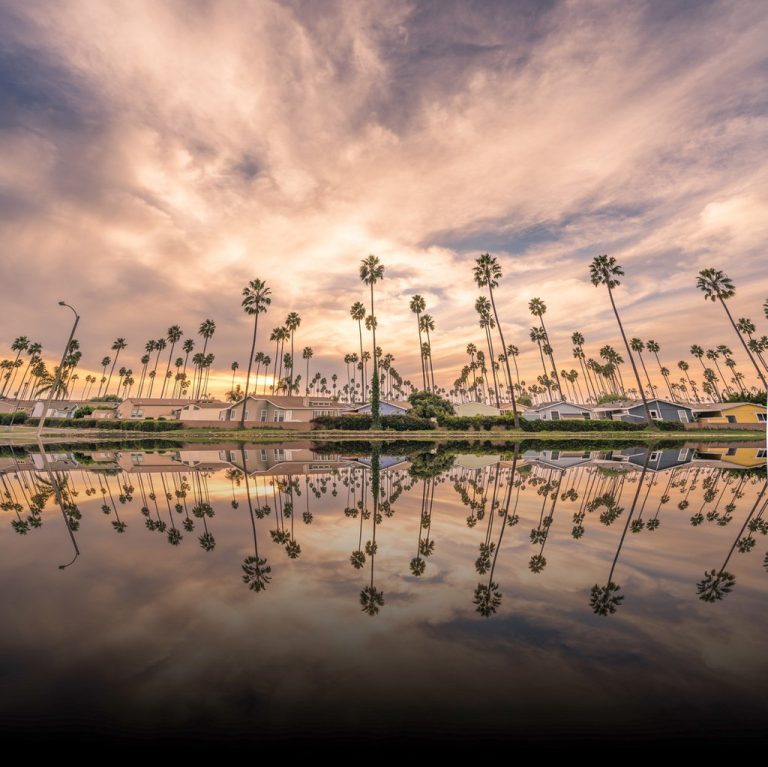Creating Blog Posts with Visual Appeal
You may be wondering why blog posts with visual appeal are important. If you are writing content that covers your topics satisfactorily and your readers are getting what they need, why would anyone care about graphics, you may be thinking. Read on, as it turns out this is a very important aspect of growing your business online.
The guiding philosophy in blogging tends to be the idea that content is king. While it remains true that quality content is essential, today’s bloggers need to consider other elements of their digital space to gain traction in an overcrowded market. Blogs can be effective tool for relaying information, developing a loyal customer base, creating a platform for your freelance work and asserting yourself as an authority in your field.
However, to achieve any of these goals, your content must be seen by the right people. The creation of eye catching images is an effective method to help you get noticed. Keep reading to discover why your blog needs visually appealing graphics.
Build Brand Awareness As You Create Blog Posts with Visual Appeal
Even if the purpose of your blog isn’t commercial, it’s still in your best interest to create a personal brand. Your brand is the feeling or message people get when they see your blog. For example, if your niche is all about makeup, you’ll want to consider the kind of image you wish to portray. You could aim to portray yourself as a high-end, sophisticated cosmetics expert or aim for the vibe of a fun, eclectic instructor. You would then determine the colors, typography, symbols, logo and other elements that lend themselves to creating such a feel. By using these elements consistently when you post anywhere online, you are building brand awareness. Each time that someone sees your sites or products and are exposed to these visual representations they will begin to recognize that as you. That is called branding.
Appear Professional
Adding graphics that incorporate elements of your brand also makes your blog look professional. Be sure to choose high-quality images, rather than blurry photos or ones that appear overly promotional. We’ve all seen graphics that contain photos that are clearly outdated, generic stock images but there is no need to use those when there are plenty of sites that provide access to free images that are beautiful and well-done. If they allow commercial use and modification, you can add your own special touches such as overlays and text to customize them. Make sure you check the licenses to see exactly how you can and can’t use the images.
Get Shared More Frequently by Creating Blog Posts with Visual Appeal
Social media posts that contain a visual image are shared far more than those without. People relate to photos. Quotes elicit emotion. Infographics provide easy to digest content in a quick, visual manner. It makes sense that such images would be shared more readily than simple text. Social media is one of the quickest ways your content can spread, and attention-grabbing graphics will surely boost the sharing. This is particularly true for a platform like Pinterest that relies on images.
Hopefully, it’s clear to see why you need images and/or some type of graphics for your website. The right images will not only help you get noticed but help others identify you with your brand.
Familiarize Yourself With These Graphic Design Terms
Whether you plan to hire a graphic designer to create visuals for your blog or you want to learn some basic design skills on your own, it will benefit you to gain an understanding of the terminology used in the profession. Learning the lingo will help you to communicate clearly with your designer or to grasp the fundamentals of good design prior to attempting to give it a go. Take time to familiarize yourself with these graphic design terms to lessen the overwhelm and give you more confidence to bring your ideas to life.
RGB
RGB is a model of using color in which red, green and blue are used exclusively in the creation of new colors. RGB is a system that is used in digital design, rather than in print.
Opacity
Opacity refers to the level of transparency in a design element. At 100% opacity, an object is solid. As the percentage gradually decreases it becomes more transparent.
Logotype/Logomark
A logo is an important design element that is a visual representation of a company or, in this case, a blog. There are two main types of logos. A logotype is the company’s name designed in a way that is recognizable. A logomark is a mark or symbol that comes to represent the brand.
Texture
Texture refers to the characteristics of a design’s surface. Various types of textures are used to add dimension or to provide a particular feel to a design. An example may be retro textures that are incorporated into a project to give it the appearance of a vintage poster or a document produced by ink press.
Whitespace
This is also commonly referred to as negative space. This is the portion of a design that is purposefully left blank. Despite the name, this empty space can be any color. Ample whitespace is encouraged in good design.
Style Guide
A style guide is a document that contains the specifications that are to be consistently used when displaying your brand. It specifies the exact colors, typography, sizes and other such criteria so that the look of your brand is the same across various platforms.
Raster
A raster is a type of image that is comprised of pixels. Such graphics do not conform well to changes in size, as they will usually become distorted and lose their original integrity. The popular graphic design software Photoshop uses raster images.
Vector
The opposite of a raster image is a vector. Rather than being made of pixels, this type of graphic is formed with actual lines, points and curves to form shapes. They can be resized without losing their original form.
Typography
Typography is the way in which letters are presented, either digitally or in print. Commonly referred to as font, it provides a particular look to your text. Types of typography include serif, sans-serif and script.
Hierarchy
The hierarchy of a design is the way in which it is laid out. Such layout is purposeful in order to create a path for the eye to follow, to improve navigation or to designate importance of design elements.
Color Palette
The color palette is the combination of colors used in your brand. The colors should work well together and provide a feeling that is reflective of what your offer. Color psychology is important to reaching an audience.
The terminology offered here only scratches the surface of those you’ll find as you pursue the art of design. Hopefully, they will allow you to communicate effectively with your designer or to begin to understand the very basics of graphic design for your own purposes.
Choosing a Visually Appealing Color Scheme That Works for Your Blog
Color is an essential element of your blog. The palette you use is a representation of your blog’s brand and is actually the first thing people associate with your name. Your colors should match the message you wish to send, and they should be consistently used in all promotional materials. Social media imagery, post graphics, blog banner and other promotional materials should carry out variations of the same color palette. With all of the colors available to you, choosing just a few can be a daunting task. Follow these tips to choose a color scheme that works for your blog, and you’ll soon be taking the first step toward developing your online image.
Understanding Color Theory: Color theory is the principle that color evokes a mood or feeling. Let’s look at the common associations that exist with some basic colors.
• Red has a lot of different meanings attached to it. It can be a symbol of love, but can also elicit anger. The shade you choose will help to define your intent and should likely be used sparingly in your designs.
• Blue is frequently attached to a feeling of sadness; however, it’s also been shown to evoke trust in consumers. Blue can be seen as serene and calming, as well.
• Green also comes with a wide array of meanings. Some people associate money with green, while health and wellness can also be represented by shades of green.
• Yellow is bright and sunny, signifying happiness and energy.
• Orange is another energetic hue that elicits an image of confidence and success.
• Pink is a color that evokes a feminine or compassionate vibe..
Basics of a Color Palette for Blog Posts with Visual Appeal
You should choose no more than four to six colors for your palette. If you’re using black or white as main contributors, don’t count them toward this number. You can use up to three main colors for elements like your logo, header, graphics, backgrounds and patterns. Choose one or two accent colors for a pop of contrast on buttons, bold text and icons. Finally, you’ll want to add a neutral color or two to add balance. You’ll want to mix things up between dark, light, contrast and neutral colors.
Set the Mood for Visually Appealing Blog Posts
A good way to play with various combinations and to narrow things down is to create a board on Pinterest. You may set the board to private if you wish, and then start pinning images that create the tone of the vision you have for your brand. If you have certain colors in mind, use them. Otherwise, just start pinning images that interest you to see if a pattern develops. You can then discard pins that don’t make sense and use what remains to pull from. If you have Photoshop, you can create a mood board with that software and use the eyedropper tool to grab colors from the board. If this step is too advanced, look for websites like Adobe CC or ColourLovers to generate your palette.
Obviously this may take some learning but have fun and go with your instincts and don’t let yourself become overwhelmed with obtaining the perfect combination. Choosing your brand’s color palette is a fun and creative process.
Free Vs. Paid Graphic Design Tools
If you’re just starting your first blog or even if you’re revamping an established one, you may not have the budget or wish to spend the money for professional graphic design software. The gold industry standard is Adobe, with products like Photoshop, Illustrator and InDesign, however, these programs can be expensive.
Fortunately, the company developed Adobe Creative Cloud, a monthly paid subscription alternative to shelling out thousands of dollars to own the software. Monthly subscription costs can still add up, particularly if you want access to more than one program. Many believe paid pro tools are the only way to go if you want to produce quality graphics. However, there are several open source options that are quite good. Keep these considerations in mind when deciding whether to go with free vs. paid graphic design tools so you may create blog posts with visual appeal.
Open Source Software
Free graphic design tools may be the way to go if you’re just starting out. You just download them from your chosen site and install. These types of software cost nothing and offer the basic functionality of the paid versions. The latest programs have come a long way since early offerings; however, they still have some drawbacks. One of the primary issues you may encounter is a lack of compatibility between freeware and their pro counterparts. For example, you may not be able to send a version of your latest project to a friend who uses Adobe products to gain her feedback. Also, transferring the images between applications for advanced editing is likely not a possibility. In addition, free tools aren’t usually as comprehensive as the paid ones and may be limited when it comes to advanced design. These may not be issues at all for you as a beginner just looking to create simple graphics.
Paid Graphic Design Programs
If you are excited by graphic design and feel you may wish to learn advanced techniques in the future, paid design tools may be worth the investment. There are tons of tutorials online to help you learn almost everything you’d want to know about programs like Photoshop and Illustrator. With the most advanced capabilities, there’s no limit to how far you can go in your pursuit of design mastery.
Programs by the same company are compatible with each other, making it seamless to take a project from one application and use it in another. You can also send your work to other designers if you wish to hire someone to add finishing touches or complete a larger work. Beyond the price, one disadvantage may be the intimidation factor involved in learning complex professional software. This can be overcome once you begin experimenting, taking classes or following online tutorials.
Recommended Free Tools
New software is being developed in the open source realm every day, so there are many from which to choose. Let’s look at some of the most trusted programs out there to get you started. These options can be used with either Windows or Mac and will facilitate your efforts to create blog posts with visual appeal.
Gimp is a good choice if you’re looking for a good Photoshop alternative. You can use this tool’s basic features to manipulate raster images and artwork to create quality graphics. Inkscape is a tool that is vector-based, meaning images can be resized and modified without losing visual integrity, similar to Illustrator. A couple specific features missing from this alternative are the ability to create gradient mesh and the use of advanced filters. You can likely do without these as a beginner.
Like Photoshop are sites & apps like Pixlr, Photoscape, SumoPaint and the ever-popular online program PicMonkey. If you’re an Illustrator user then consider trying Vectr, OpenOffice Draw or SVG-edit online instead. The online tool Canva is also a popular option, but it does have drawbacks such as the inability to create your own shapes or resize your work for various social media use.
There is no one right answer as to which option is best for your graphic design use. If you want to grow as a designer, paying a monthly subscription fee for Adobe Creative Cloud may be the wise decision. On the other hand, free graphic design tools may be your best bet if you just want to be able to produce basic images for your blog. Either way, you can enjoy the fun of creation and customizing your online space.
Basic Graphic Design Principles for Bloggers
The best graphic designers often possess natural given talent, along with years of specialized training, but that doesn’t mean you can’t create lovely image assets for your blog as a beginner. Creating and publishing blog posts with visual appeal is worth the time and effort you need to make that happen. And always remember, there is natural beauty in simplicity and imperfection.
One key to producing professional looking graphics is to understand the fundamental concepts of design. Knowing these rules will help you to avoid obvious mistakes that could make your blog look amateur. Incorporate these basic graphic design principles for bloggers into your images, and you’ll soon be producing images you’ll be proud to share.
Alignment
Alignment refers to the way in which the text is arranged on your canvas. It’s often tempting for new designers to align everything in the center, but this can produce a result that’s lacking visual appeal. Play around with alignment using left, right or vertical alignment for different blocks of text to find unique arrangements that work with the other elements of your design.
Proximity
The way in which different elements are grouped together is proximity. Choose the location of design elements strategically to guide the viewer’s eye to where you want it to go. You can do this by placing text into shapes to create a border that breaks things up or by getting creative with linear position, such as situating text on an angle.
Color
You’ll want to incorporate your color palette into your images to keep your branding consistent. You can do this by choosing photos or artwork that reflect or are compatible with your scheme. It’s also possible to place a semi-transparent colored overlay on top of your art to add a hue that works. Just remember to use color theory as your guide and pick a color that elicits the response you desire.
Line
Line plays a significant role in design. Whether used as a border or to break up text, the type of line you choose conveys a message. Straight, clean lines give a sophisticated and modern feel, while curves add softness and warmth. Squiggly lines can be whimsical or fun. Even the width of your lines can have an impact.
Shape
Another important aspect of design is shape. Using hard-edged, straight-lined shapes like squares and triangles often lends to a masculine feel, with curved circles or rounded corners fit well in more feminine design. Straight shapes can imply seriousness, sophistication or stability. When you want to create a relaxed vibe, go with softer shapes.
Space (Whitespace)
Space, or whitespace as it’s often termed, provides purposeful blank area to allow the viewer’s eye to relax. One of the biggest mistakes made by amateur designers is to use too little space. Avoid trying to cram too much into your graphic, as it can look messy and hard to read. Too much whitespace is a hazard also because it can have an unfinished feel. Experiment to discover what works.
There are a host of other design concepts that are important producing professional looking graphics, but these basic graphic design principles will get you started. Adhere to these fundamentals to create blog posts with visual appeal that will add interest to your blog and encourage others to share on social media.
I’m author, publisher, and entrepreneur Connie Ragen Green and would love to connect with you. If you are new to the world of online entrepreneurship please check out my comprehensive training on how to set up Funnels That Click and learn how to gain an unfair advantage when it comes to building a lucrative online business.








Leave a Reply